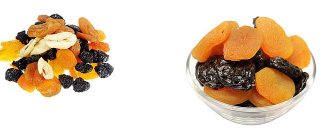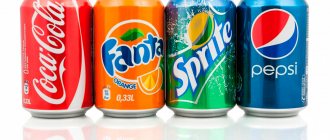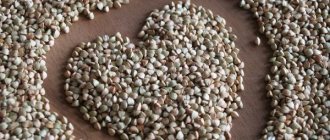Lisa Hodgson, American nutritionist and member of the US Academy of Nutrition and Dietetics : “You've probably heard it a hundred times: eat more fruit. What about dried fruits? Can they replace fresh fruits for our benefits, taking into account their undoubted advantages - all-season availability and ease of storage? Plus, dried fruit makes a great snack and is much easier to take with you than a couple of bulky bananas or easily damaged, juicy pears. But if you've ever eaten a package of dried mangoes, pineapples or peaches in one sitting and then wondered how healthy dried fruit really is compared to their fresh counterparts, you've come to the right place.”
Lisa loves to talk about dried fruits because for some time she was literally addicted to them.
Are there any disadvantages to eating dried fruits?
Short answer: yes. Dried fruits are quite high in sugar and calories. They're smaller than the fresh originals, almost weightless, and easy to eat too much at once without even noticing.
Can you eat 15 apricots or 4 whole mangoes at once? But when a significant amount of water is extracted from the fruit and it turns into dried fruit, you can eat quite a lot of it. This can lead to increased consumption of sugar and calories, and therefore weight gain.
In addition, due to the high content of fiber and natural alcohols, some dried fruits can cause gastrointestinal upset - bloating, gas, diarrhea. Be careful with dried apples, pears, mangoes, peaches, persimmons, dried apricots, prunes and cherries. If you have problems with the gastrointestinal tract, choose dried bananas, raisins, melon, kiwi and papaya.
When you buy dried fruit, read the labels. Many of them contain “added” sugar in the form of juices, syrups, or even regular sugar itself. To preserve color, some brands use sulfites, which can sometimes cause allergies.
The benefits of dried fruits for diabetes
Avoiding sweets is the main part of treatment for diabetes. But in order to completely abandon it, you need to have a truly iron will. It is believed that those who suffer from diabetes have more cravings for it than others.
In order to compensate for sugar-containing foods, patients have to compensate for these fast carbohydrates with healthier ones. These include dried fruits. They reduce the need for sugar, and are also healthier than cakes and sweets.
The benefits of dried fruits include:
- antioxidants;
- anthocyanins;
- beta carotene.
The first component is especially important for diabetics, as it helps eliminate free radicals, which are quite abundant in such patients. Antioxidants improve the condition of blood vessels with nerves, significantly slowing down the aging of the body. A characteristic feature of the presence of these components in dried fruits is their dark color. Therefore, when choosing, for example, raisins, you should give preference not to light, but to dark. It turns out that if compared by this criterion, a dried apple in this case is worse than raisins.
Anthocyanins are found in large quantities in dark purple dried fruits - these are dark raisins with dried cherries and prunes. The presented substance improves the condition of the blood ducts, preventing the formation of cholesterol plaques, strengthening the retina, and helping collagen formation.
Beta-carotene is found in orange and brown dried fruits. This component is not only an antioxidant, but also a storehouse of vitamin A. It. This is precisely what is needed for patients with type 2 diabetes, as it is used in the restoration of bones and connective tissue, and in the production of antibodies with interferon. An example of these products is dried apricots with raisins and dried melon.
The healthiest and correct way to consume dried fruits
I recommend limiting your consumption of dried fruit to 300g/day. It is better if it can be divided into several parts and “stretched” over time. Remember that 300 g is the total weight of all dried fruits for the day. A recommended daily portion
- prunes – 100 g,
- dried apricots – 300 g,
- apples – 350 g,
- pears – 210 g,
- figs – 12 pieces,
- melons – 300 g,
- dates - 16 pieces.
So make your mixes according to your taste. Please note that these are general indicators and should definitely be discussed with your doctor, especially if you have high blood sugar and problems with the gastrointestinal tract.
My advice: cut dried fruit into large pieces and mix with nuts or add to salad.
At the same time, there are optimal combinations of “dried fruits + nuts”. I will name just a few of them:
- raisins and walnuts/hazelnuts,
- figs and hazelnuts,
- dried apricots and almonds/hazelnuts
- dates and coconut/brazil nuts
- dates and almonds,
- prunes and walnuts/hazelnuts,
- apple/pear and hazelnut
But I don’t recommend combining melon with nuts at all.
Sugar in vegetables
Sugar is also present in vegetables in the form of fructose, but in much smaller quantities than in berries and fruits. The most sugar is found in boiled beets, cherry tomatoes, onions and carrots. But at the same time, vegetables are rich in healthy fiber.
The situation is different with thermally processed vegetables. When boiling, stewing or frying, the fiber contained in vegetables is destroyed (the longer the heat treatment process, the greater the destruction). When it is destroyed, glucose absorption accelerates.
Don't be afraid of cooked vegetables. Monitor your glycemic index and eat a balanced diet.
About sugar and calories
To avoid overindulging in dried fruit, consider it a treat. This is the easiest way out. You can also simply remember the top 5 highest calorie dried fruits (kcal content per 100 g)*.
- Dates – 375 kcal
- Dried persimmon – 366 kcal
- Dried bananas – 325 kcal
- Dried figs – 304 kcal
- Dried peach – 239 kcal
100 g of dried fruits on average - 15% of the daily calorie intake.
And the top 5 sweetest dried fruits (sugar content per 100 g).
- Persimmon – 80 g
- Dates – 63 g
- Bananas – 60 g
- Dried apricots – 53 g
- Prunes – 38 g
These data are averaged, since everything depends on the variety, recipe and production technology of each individual type of dried fruit.
Can I eat dried fruits if I have diabetes?
Dried fruit is a source of large amounts of simple carbohydrates. But there are products in which sugars are neutralized by a high percentage of fiber. Such dried fruits practically do not provoke glucose fluctuations in diabetes mellitus.
With endocrine pathology, internal organs and systems suffer. Dried fruits, when consumed regularly, maintain the normal physical condition of the body:
- saturate it with vitamins and mineral elements;
- improve blood circulation in brain tissues;
- strengthen blood vessels;
- prevent the occurrence of convulsive conditions and painful sensations in the limbs;
- normalize the functionality of the digestive tract.
The advantage of consuming dried fruits is safety for the body, absence of side effects if you choose the right product and comply with daily consumption standards. To understand whether dried fruits are ok for diabetes, you need to take into account the glycemic index of each type of product. It is permissible to include fruits in the diet whose GI is not higher than the norm allowed for diabetics.
Below we describe in detail which dried fruits you can eat with diabetes and which you can’t, and the GI for each product is indicated:
- Apples - GI 29. For use in cases of carbohydrate metabolism disorders, fruits with green skin and sour taste are dried. Unsweetened apples contain high concentrations of pectins - compounds that have a positive effect on the functionality of the intestines.
- Pears - GI 34. One of the healthiest foods for diabetics, consumed both on their own and in drinks. It has an immunostimulating effect, contains high concentrations of fiber, which helps maintain normal intestinal motility and the functioning of the digestive tract.
- Apricots - GI 35. Must be present in the diet of a diabetic. Saturated with fiber, B vitamins, ascorbic acid, mineral elements, carotene. In case of metabolic disorders, dried apricots cleanse the body of toxins and decay products, normalize the functioning of the liver and kidneys, eliminate swelling, reduce the negative effects of drug therapy, maintain visual acuity and the normal state of the nervous system.
- Plums - GI 29. Thanks to the low glycemic index, rich in vitamins, microelements, and bioactive substances, prunes bring great benefits to the body without increasing the concentration of glucose in the blood when consumed in moderation. The calorie content of the product is low; it contains fiber, retinol, tocopherol, ascorbic acid, B vitamins, microelements, pectin compounds, and organic acids. Prunes have antioxidant and antibacterial effects and normalize physical condition in chronic diseases.
- Citruses - GI 35. For diabetes, dried orange and grapefruit slices are recommended for weight loss, general strengthening of the body, tone, and stimulation of metabolic processes. However, dried citrus fruits can enhance the effect of heart medications, so they are consumed in moderation.
If you have diabetes, you can include dried berries in your diet: raspberries, viburnum, cranberries.
What to exclude from your diet
Exotic dried fruits are contraindicated in case of impaired metabolism. They should not be included in the diet even in minimal quantities. The ban is due to the high glycemic index:
- dates – 145;
- mango – 60;
- candied pineapple – 75;
- banana chips – 70;
- papaya – 75;
- candied ginger – 70;
- dried figs – 55.
You should not include dried cherries, cherries, rare exotics - carambola, passion fruit, durian - in the menu. Raisins, dried melon and watermelon, which have a GI of 65 units, can be included in the diet, but rarely, in limited portions. The harmful effects of simple carbohydrates are compensated by the abundance of fiber.
Do dried fruits have the benefits of fresh fruits?
Short answer: yes. Dried fruits provide us with fiber, vitamins, minerals and antioxidants.
- Prunes provide the body with calcium to strengthen bones and fiber to regulate the gastrointestinal tract.
- Dates promote fertility and childbirth and are the most nutritious of dried fruits.
- Dried apricots contain vitamins A, C, PP, B1, B2 and minerals (phosphorus, sodium, calcium, magnesium, iron). Dried apricots help strengthen bones and immunity. At the same time, dried apricots without sulfites are better than dried apricots with sulfites.
- Raisins, one of the most popular dried fruits, help with blood pressure, lower cholesterol and promote satiety.
And finally, some more numbers:
- 3 fresh apricots weighing 180 g equals 40 g dried apricots
- 1 handful of grapes, 170 g – 40 g raisins
- 1 peach, 150 g – 40 g dried peaches
- 3 plums, 190 g – 40 g prunes
- 1 apple, 200 g – 40 g dried apples
- And 3.3 kg of fresh figs turns into 1 kg of dried figs.”
This material is for general information only and should not be construed as a substitute for medical advice from your physician or other health care professional.
What types of fruits are there?
There is a generally accepted division of fruits and berries into groups - sweet, sour and semi-acid. Slightly acidic or sweet fruits can be combined with any fruit from the “sour” group, but not recommended with each other.
- Sour fruits and berries
Lime, lemon, sour varieties of kiwi, grapes, apples, pears, plums, peaches, pomegranate, orange, cherry; pineapple, cranberry, currant, sour berries. - Semi-acidic fruits and berries
Sweet varieties of apples, pears, peaches, oranges, plums, pomegranates, cherries and grapes; strawberries, raspberries, blackberries, figs, apricots, blueberries, blueberries and most berries. - Sweet fruits and berries
All dried fruits, bananas, persimmons, figs, lychees, mangoes, melon, papaya, cherries.
Secrets of choosing dried fruits
Contrary to popular belief, not all dried fruits are necessarily treated with preservatives or dried in industrial ovens.
Expensive packaged products, especially imported ones, are indeed treated with chemicals. Natural drying and manual labor are not neglected by producers from the CIS countries, who import dried fruits at the lowest prices in huge quantities. Dried fruits dried in the shade, without treatment with preservatives, are very different from the usual ones. Dried apricots, soft and aromatic, have the same color as chocolate. Dried in the sun, on the contrary, it is very hard and light yellow. It is difficult to chew it without soaking it.
Raisins are black in color, with wrinkled dry skin, and a natural grape bloom of bluish color. Natural apricot seeds are cracked and sweet apricot kernels are consumed in small quantities. Natural pears, apples, quinces are hard, completely dry to the touch, darkish, very cheap and incredibly healthy.
Where is glucose found: list of products
Fructose, calories per 100 g
Calories, 399 kcal Proteins, 0 g Fats, 0 g Carbohydrates, 99.8 g
You have opened the product page Fructose, whose calorie content is 0 kcal. Would you like to know where Fructose ranks in terms of product value in the Raw Materials and Seasonings category? Just click on the desired category and sort all items, for example, by the number of proteins and by the number of calories.
We also advise you to pay attention to the content of vitamins and microelements, as well as the amount of useful or harmful additives, information about which we indicate below, whenever possible. And remember that the main thing is healthy, not tasty!
How to burn 399 calories?
110 minutes Walk
45 minutes of running
34 minutes of swimming
60 minutes cycling
How to properly wash dried fruits
Even if you are confident in the quality of dried fruits, you must wash them thoroughly before eating. You should start with soaking. Take filtered or boiled water at room temperature and pour the dried fruits in a large bowl or pan - so that the fruits float freely. During this time, they will soften a little, and all the sand and dust from them will settle to the bottom of the bowl.
This washing method will also help get rid of sulfur dioxide if you change the water in which the dried fruits are soaked 3-4 times within an hour. But it is important not to use hot: it reduces the solubility of the chemical. Pay attention to the water in which the fruits were “soaked”: if rainbow stains and a film appear on the surface, it means they were processed using gas or gasoline burners.
After soaking, be sure to rinse the dried fruits thoroughly with running water.
How much to use so as not to harm, but to help?
Despite the obvious benefits, you should not eat too much dried fruit, primarily because of their calorie content. Remember the benefits and harms of dried fruits if you are on a diet. If you overeat, you can gain excess weight. It is best if you consume no more than 200 grams per day. this product.
The ideal option is to have dried fruit snacks several times a day.
It is not necessary to eat dried fruits separately; they can be added to different dishes; they go well with cottage cheese and porridge.
Important! A mixture of dried fruits with nuts and honey will help with constipation, hypertension, problems with the thyroid gland, and remove parasites from the body. This is an excellent prevention of cancer.
To prevent dried fruits from being too hard, pour boiling water over them for five to seven minutes. At the same time, you will disinfect them and get rid of insects that may be in the fruit.
Glycemic index of foods
In addition, insulin forms a certain supply of glucose in our body, contained in the form of glycogen in the liver.
Glucose is absorbed very quickly in our digestive system. It is a monomer from which some polysaccharides are formed, for example glycogen, cellulose and starch. As a result of the oxidation of glucose in the body, energy is released, which is necessary for the occurrence of various life processes.
If glucose enters the body in excess, it is quickly transformed into energy reserves.
Glucose is converted into glycogen, which is deposited in various places and tissues of the body as a reserve source of energy. If glycogen reserves are already large enough, then glucose will begin to turn into fat, which is stored in the body.
Our muscles cannot do without glycogen.
After all, it is he who, when disintegrating, releases the energy necessary for the work and restoration of cells. In muscles, glycogen is constantly consumed, but its reserves do not decrease.
The fact is that new portions of this substance come from the liver all the time so that its amount remains constant.
Compared to Fresh by Serving Size
The difference between the amount of sugar in fresh and dried fruit is not that extreme when you consider the amount of sugar in a typical serving. The recommended serving size for chopped fruit is 1/2 cup. Because dried fruit is a more concentrated source of calories and nutrients, the recommended serving size is half that of fresh fruit. For example, a 1/4 cup serving of dried apricots has 17.4 grams of sugar, while a 1/2 cup serving of fresh apricots has 7.2 grams of sugar. A 1/4-cup serving of prunes contains 16.6 grams of sugar, compared to 8.2 grams in a 1/2 cup of fresh plums.
Are there many benefits to them?
To begin with, it would be nice to decide what is considered dried fruit, because this term covers many processing methods. Dates, figs, prunes, raisins, apricots, apples and pears usually do not contain additional sugar as they are dried straight from the garden. But berries - such as cranberries, cherries, strawberries (plus foreign mangoes) are usually boiled in sugar syrup or fruit juices before canning, which slightly confuses consumers. And the truth is: should such a product be considered sweet or disgusting, from a health point of view?
In some cases, the addition of sweets improves the taste of the product (for example, tart, sour cranberries). But most dried fruits do not need this, and they are additionally sweetened for other purposes: to make them soft and last longer, since sugar and sugar syrups act as natural moisturizers and preservatives. It is clear that all products with added sugar should be mentally placed on the same shelf with sweets: yes, unlike the latter, dried berries still contain a little fiber and, possibly, bioflavonoids, but otherwise this is a loading dose of glucose, which, if abused, kills the liver.
In countries that have been drying and drying crops since ancient times, in particular in Turkey, some scientists confidently claim that macro- and microelements and biologically active substances from dried fruits can reduce the risk of cardiovascular diseases... However, with a careful reading of these scientific works, it may It turns out that most of the authors are members of the International Nut and Dried Fruit Council (there is one!) and receive financial support from it. And it’s somehow harder to trust these learned men!
But there are, of course, independent experts. The contribution of dried fruits to public health was discussed, for example, at a special scientific seminar in the UK. Its participants summarized the results of several studies and came to the conclusion that the content of nutrients in dried fruits remains the same as in fresh ones - with the exception of vitamin C (it suffers with any processing). And a special feature is prunes: they are indispensable for intestinal health. There is evidence that a serving of several pieces per day can protect against colorectal cancer: thanks to dried plums, intestinal bacteria will be in such good shape that they will not allow the body to get sick!











